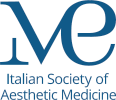Article
Plastic surgery is nowadays a well-recognized and valued discipline in the surgical community. Its roots may be traced back to very ancient times, with written testimonies since 3000 BC. The oldest described procedure is the reconstruction of nasal defects, which appears in an ancient Egyptian medical text, known as the Edwin Smith Papyrus 1. Descriptions of the first skin grafts, and flap-based techniques for nasal reconstruction, are found in the Indian treatise Sushruta Samita, written in 600 BC by the ayurvedic physician Sushruta, who is regarded as the Father of Plastic Surgery 2. These written testimonies prove how concepts of beauty, self-improvement, and aesthetic harmony, along with the reconstructive principles upon which plastic surgery rests, are part of the human cultural heritage from very early on. If one thinks that the first evidence of tissue reconstruction dates to times when there was no anaesthesia, infection control was poor, and surgical techniques less developed, it is no surprise to see how plastic surgery has evolved over time, in concert with the experience gained and the progress witnessed across the medical and surgical fields. The first reconstructions entailed the use of grafts and pedicled flaps, on the trail of the experiences from antiquity. In the 1400s Antonio Branca described a two-stage reconstruction of nasal defects with the use of upper limb pedicled flaps, that was then recalled and further detailed by Gaspare Tagliacozzi in the Gasparis Taliacotii De Curtorum Chirurgia per insitionem Libri Duo, which is considered a landmark text devoted to plastic surgery and reconstruction. The next significant advancements in plastic surgery came in the twentieth century, owing to the necessities imposed by the World Wars, at time of which military physicians had to deal with extensive burns and tissue defects requesting the adoption of innovative reconstructive strategies. Staged pedicled flap reconstructions were introduced and popularized in the early 1900s for the repair of extensive defects from ballistic traumas and burns. Nonetheless, the groundbreaking innovation in plastic reconstructive surgery came in the last decades, with the advent of microsurgery and in-depth studies of vascular anatomy. The introduction of microsurgical flaps expanded the armamentarium of reconstructive techniques, optimizing the use of autologous tissues for the coverage and restoration of almost any tissue defect. To date, microsurgical flaps, which represent the finest technical evolution of the Egyptian and Indian reconstructive approaches, are valued as workhorse for the reconstruction of poorly vascularized wounds and complex tissue defects resulting from trauma and oncologic resections, avoiding – whenever possible – multi-staged procedures and providing ever-improving aesthetic outcomes. The value of plastic surgery should be thus recognized in being a problem-solving discipline, that has evolved in parallel with technical advances, scientific knowledge, and creative intuition, to grant the most suitable and pleasant reconstructive solutions at benefits of several medical and surgical specialties. Nowadays plastic surgery principles are key to any reconstructive procedure and the discipline finds application to many surgical fields 3-5. The introduction of perforator flaps heralded a further evolution of flap-based surgery, enabling to customize and tailor the reconstruction of tissue defects whilst minimizing donor site morbidity. Despite the progress made in the field of reconstructive surgery thus far, what are now referred to as conventional reconstructive strategies present limits when it comes to injuries causing severe facial disfigurement, extremity amputations and other complex tissue defects requiring a fine morfofunctional restoration. In this regard, the field of Vascularized Composite Allotransplantation (VCA) has brought meaningful results, with the first hand transplantation in 1998 and the first successful face transplant performed in 2005, providing effective solutions even for complex tissue defects. Tissue engineering (TE) represents a promising and cutting-edge discipline, which is likely to pave new ways for tissue reconstruction, merging basic science and technological advances with the principles and art of plastic surgery 6. In the faithful and relentless efforts to provide the most suitable and pleasant solution for the reconstruction of tissue defects, any surgeon should always keep a patient-centered perspective having care of expectations and needs. As one of the Father of Plastic Surgery wrote, “We restore, rebuild, and make whole those parts which nature hath given, but which fortune hath taken away. Not so much that it may delight the eye, but that it might buoy up the spirit, and help the mind to the afflicted” (Gaspare Tagliacozzi, 1597).






